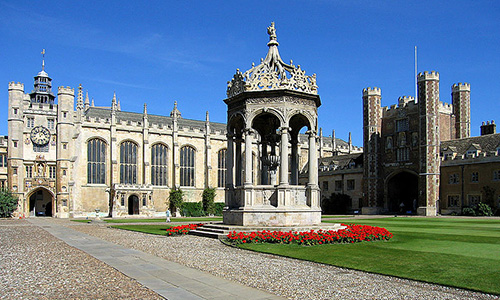1. The average college debt per student is 23,700 dollars
The average college student’s debt in the US is 23,700 dollars and the average student loan payment is 432 dollars per month. Of the thirty-seven million borrowers who have outstanding student loan balances, 14 percent or 5.4 million borrowers, have on the minimum one student loan account not paid on time. Most of the borrowers who are still paying back their loans are in their 30s or older. There are an approximate 864 billion dollars in outstanding federal student loan debt while the remaining 150 billion dollars is in private loans. Student loans are the most common form of increasing debt among 18 to 24-year-olds.
2. College textbook price has gone up by 812%
The price of college textbooks has risen 812 percent in the past 30 years. That is more than healthcare costs, housing prices, and college tuitions, all of which have risen faster than the rate of inflation.
3. College student was first to go to Disneyland
The first guest to set foot in Disneyland was a college student by the name Dave MacPherson. He received an award of a lifelong ticket to Disneyland with up to three guests. The ticket has since extended to include Disney parks around the world.
4. College students run a nuclear reactor in Oregon
There is a small college in Oregon that has its own nuclear reactor. The nuclear reactor is run by undergraduate students and has more female reactor operators than all the other research reactors in the world combined.
5. College students pulled a beer prank on police in George Washington University
Police at George Washington University used facebook to acquire knowledge about college parties and bust them in 2006. To fight back, students organized a beer blast event on facebook. When the cops showed up, there was no alcohol, but cookies with “Beer” written on them and games of “Cake-pong.”
6. College enrollment went up by 38% between 1999 and 2009
During a decade span ending in 2009, undergraduate enrollment has jumped 38 percent, with some of the highest development occurring in Arizona, Georgia, West Virginia and Florida. Among common majors, education faced the biggest drop in interest among undergrads. In the 10-year period, the number of students earning an education degree declined 5 percent. Only 0.4 percent of undergraduates go to one of the Ivy League schools.
7. College fit determine completion rate
In just a year, 1,250,000 students transferred to a different school, and 1,125,000 dropped out. Finding the perfect college is important to staying in college and remaining where one begins. Factors that students need to check to determine college fit include financial, academic, and social requirements. Time spent on research in preparing for application translates into a happier, more content, college experience.
8. An average college student attends 62 parties each year
The average college student attends 62 parties annually. Partying can cause poor grades, poor health, poor class attendance habits and participation. Students should do things in moderation to protect their investment and graduate with a modicum of education.
9. Most students cannot afford the colleges they get admitted to
57 percent of high school seniors accepted to their first-choice colleges cannot afford to attend due to financial constraints. This means such students fail to investigate the college’s financial aid awards before applying.
10. Working in college is beneficial for students
23 percent of full-time undergrads aged twenty-four or younger work 20 hours or more weekly. Statistics indicate that working during college is a positive thing, contrary to what many students and parents believe. Working students are compelled to organize their time, set aside time to study, and prioritize their lives around their work hours. An added advantage is scoring some cash for college expenses.











November 17, 2018 12:45 am
I am highly interested following and reading your post.
December 17, 2018 12:33 pm
that is awesome, interesting, and AMAZING!